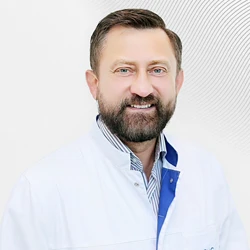Paratonsillar abscess
There are many diseases of the throat, but one of the most serious and requiring immediate intervention is paratonsillar abscess. It is an acute purulent inflammation of the pericardial fiber. An abscess forms in this area, which causes severe pain when swallowing, fever, general malaise, and other symptoms.
Acute tonsillitis (tonsillitis) or chronic tonsillitis in the acute phase is most often the cause of the development of an amygdala abscess. Bacteria that enter the soft tissues of the tonsils cause an inflammatory process. If the immune system cannot cope with the infection, the inflammation spreads to the surrounding soft tissues, forming an abscess. Concomitant factors also play an important role in the development of pathology: decreased immunity, chronic diseases of the nasopharynx, smoking, alcoholism.
There is also a cold abscess, which is an accumulation of pus in a small area without the symptoms of an inflammatory reaction (pain, redness of the skin, fever) typical of a common abscess. Under favorable conditions, such an abscess can become "hot".
Symptoms of the disease
Clinical manifestations of paratonsillar abscess depend on the stage of the disease, but they usually include:
-
severe sore throat, which worsens when swallowing;
-
temperature rise to high levels;
-
putrid breath;
-
spasm of the masticatory muscles (trismus), which makes it difficult to open the mouth;
-
increased salivation, drooling;
-
changing the timbre of speech;
-
enlargement of lymph nodes in the neck;
-
signs of general intoxication include weakness, loss of appetite, and sleep disorders.
Patients often complain of a feeling of a foreign body in the throat, difficulty opening the mouth and a change in voice. On examination, there is a significant increase and redness of the tonsils on one side, as well as swelling and hyperemia of the surrounding soft tissues, palate asymmetry, and a shift towards the uvula of the soft palate.
Stages of development
Parathyroid abscess develops in several stages:
In the first, or edematous stage, inflammation and edema of the perindibular tissue occur. The patient experiences severe pain when swallowing, general weakness, and fever.
In the second, or infiltration stage, purulent exudate accumulates in the tissues near the tonsil. The pain becomes even more intense, often radiating to the ear, teeth, or neck. The temperature rises, nausea appears, and vomiting may occur.
The third, or abscessing stage, is characterized by the formation of an abscess.The pain becomes unbearable, and the patient cannot open his mouth and swallow properly. Possible phlegmon formation of the neck or sepsis development.
A paratonsillar abscess requires mandatory medical intervention. If this disease is suspected, it is necessary to urgently consult an otorhinolaryngologist for diagnosis and appropriate treatment.
Diagnosis of the disease
The diagnosis of paratonsillar abscess includes several stages. First, it is the collection of medical history and examination of the patient. The doctor will ask questions about the nature and duration of the pain, the presence of fever, weakness, loss of appetite, and other symptoms. At this stage, a pharyngoscopy is performed – an examination of the throat with the help of mirrors. The procedure can also be performed using an endoscope that transmits an enlarged image to a monitor.
Secondly, laboratory diagnostic blood tests are performed. A general blood test will show an increase in the level of white blood cells and ESR, which indicates an inflammatory process in the body. A bacteriological examination of a throat smear may also be performed to determine the type of pathogen and its sensitivity to antibiotics.
Thirdly, computed tomography (CT) of the soft tissues of the neck with contrast is performed to confirm the diagnosis and clarify the stage of the disease. This study is usually prescribed to patients who are indicated for surgical treatment.
Treatment methods
Treatment tactics depend on the stage of the disease and are determined by the doctor based on the results of examination and diagnostic tests:
-
In the early stages, when the abscess has not yet formed, treatment is usually conservative. The patient is prescribed antibiotics, painkillers and anti-inflammatory drugs. It is recommended to drink more warm liquids and avoid spicy and hard foods that can irritate the throat.
-
If an abscess has formed, surgical intervention is required. The doctor makes a small incision in the tonsil and removes the pus. After opening the abscess, a course of antibiotics is prescribed to prevent further spread of the infection.
-
If complications develop, such as neck phlegmon or sepsis, hospital treatment is required.
Self-treatment of an amygdala abscess is unacceptable and can lead to serious complications. At the first signs of the disease, you should consult a doctor.
Opening of an abscess
Surgical opening of a paratonsillar abscess is usually performed under local anesthesia, but sometimes general anesthesia is also used. Before surgery, the patient is advised not to eat or drink for 6-8 hours.
The doctor makes a small incision on the tonsil in the area of the abscess and gently removes the pus. Then the wound is treated with antiseptics. The procedure usually takes about 20-30 minutes. In case of recurrent diseases, abscess tonsillectomy can be performed – removal of not only the purulent contents, but also the affected tonsil.
After the surgical autopsy, the patient is prescribed a course of antibiotics to prevent further spread of the infection. It is also recommended to rinse the throat with antiseptic solutions.
Prognosis and prevention
Recovery usually takes from a few days to a week. During this period, it is important to follow a dietary regime: exclude spicy, acidic and solid foods, preferring soft and warm ones. It is recommended to drink more fluids.
Prevention of paratonsillar abscess consists in the timely and adequate treatment of diseases of the throat and oral cavity: tonsillitis, sinusitis, caries, restoration of broken teeth. To reduce the risk of developing this disease, it is also important to avoid hypothermia and stop smoking.
Possible complications
Complications can be quite serious and include a number of potentially life-threatening conditions. The most common of these are diffuse phlegmon of the neck and mediastinitis. They develop as a result of the breakthrough of a purulent focus through the lateral wall of the pharynx and the involvement of the parapharengial space in the process. From here, pus can spread to the mediastinum or even to the base of the skull, although this rarely happens.
Sepsis and cavernous sinus thrombophlebitis are also rare complications, but they can be the result of an abscess. These conditions occur when an infection enters the cerebral bloodstream. Brain abscesses, meningitis, and encephalitis can develop in a similar way.
An extremely dangerous complication is erosive bleeding, which can occur due to purulent melting of the blood vessels of the near-pharyngeal space. This condition requires immediate medical intervention.
All these complications can be prevented by timely medical attention and adequate treatment of paratonsillar abscess.
Advantages of treatment at the EMC clinic
At the EMC Clinic of Otorhinolaryngology, Head and Neck Surgery, we offer a comprehensive approach to the treatment of ear, throat and nose diseases. Our specialists are highly qualified and have experience working with patients of all age groups, including children.
Here are the advantages of treatment in our clinic:
-
An integrated approach is the diagnosis, prevention, conservative and surgical treatment of diseases of the ear, throat and nose.
-
assistance in all conditions – emergency and planned, acute and chronic, congenital and acquired;
-
Prompt assistance – in case of emergencies and emergencies, operations are performed at any time of the day.;
We strive to provide you with the most advanced and effective treatment methods, as well as create comfortable conditions for your recovery. Do not allow serious complications to develop – make an appointment with a doctor and get help today.
Question-answer
How to understand that a paratonsillar abscess has started?
This may be suspected in the presence of severe sore throat, unilateral edema of the tonsil, difficulty swallowing, fever, and general weakness. An accurate diagnosis can only be made by a doctor after an examination.
Is it possible to recover without surgery?
It is impossible to fully cure the abscess without opening it, since the pus must be removed.
What happens if you don't open the PTA?
Pus can break through on its own and enter surrounding tissues and organs, causing dangerous complications.
When do I need surgery?
The decision is made by the doctor only after a full examination and in the absence of the effect of conservative treatment.
What is the most characteristic symptom of a near-amygdala abscess?
The most characteristic manifestation is a unilateral sore throat that worsens when swallowing.
How to distinguish a sore throat from an abscess?
Angina is characterized by more common symptoms, including sore throat, fever, muscle pain, headache, and the presence of white or yellow plaque on the tonsils.
With angina, the inflammatory process is bilateral, with an abscess, as a rule, unilateral. With an abscess, there is no white or yellow plaque on the tonsils, asymmetry is noticeable.
List of sources and references
- Vorobyeva A.S., Kovaleva S.A. modern antimicrobial therapy of paratonsillar abscesses in real clinical practice // BMIK. 2022. №2. cyberleninka.ru
- Oleinikova Yu.D., Shibutova Yu.I. clinical and laboratory features of the course of oropharyngeal streptococcal infection // FORCIPE. 2020. No.S. cyberleninka.ru
- Ghavami S, Gombert E, De Sandre C, Lambercy K. De l’angine simple à l’abcès périamygdalien [From tonsillitis to peritonsillar abscess]. Rev Med Suisse. 2021 Oct 6;17(753):1690-1693. French. PMID: 34614309.
- Long B, Gottlieb M. Managing Peritonsillar Abscess. Ann Emerg Med. 2023 Jul;82(1):101-107. doi: 10.1016/j.annemergmed.2022.10.023. Epub 2023 Jan 19. PMID: 36669912.
- Menegas S, Moayedi S, Torres M. Abscess Management: An Evidence-Based Review for Emergency Medicine Clinicians. J Emerg Med. 2021 Mar;60(3):310-320. doi: 10.1016/j.jemermed.2020.10.043. Epub 2020 Dec 6. PMID: 33298356.
Why the EMC
The first and only clinic in Russia, created in the image of the world's leading clinics
EMC is a multidisciplinary center offering patients a high level of medical services and a personalized approach
Worldwide recognition and awards
 Learn more
Learn more
Worldwide recognition and awards
 Certificates and licenses
Certificates and licenses
Make an appointment for a consultation
Specify your contacts and we will contact you to clarify the details
Reviews
and new products of the EMC








.webp)




.webp)

